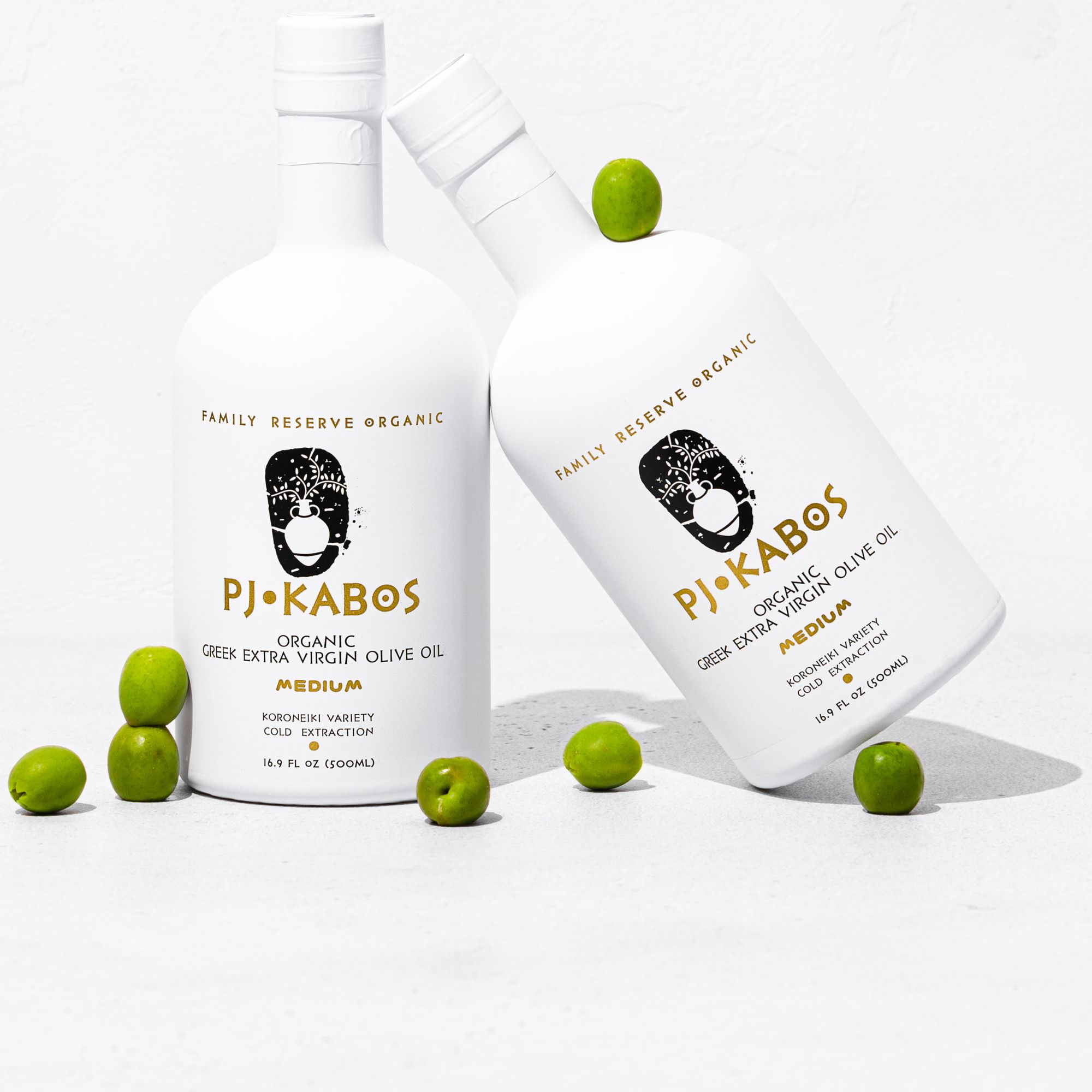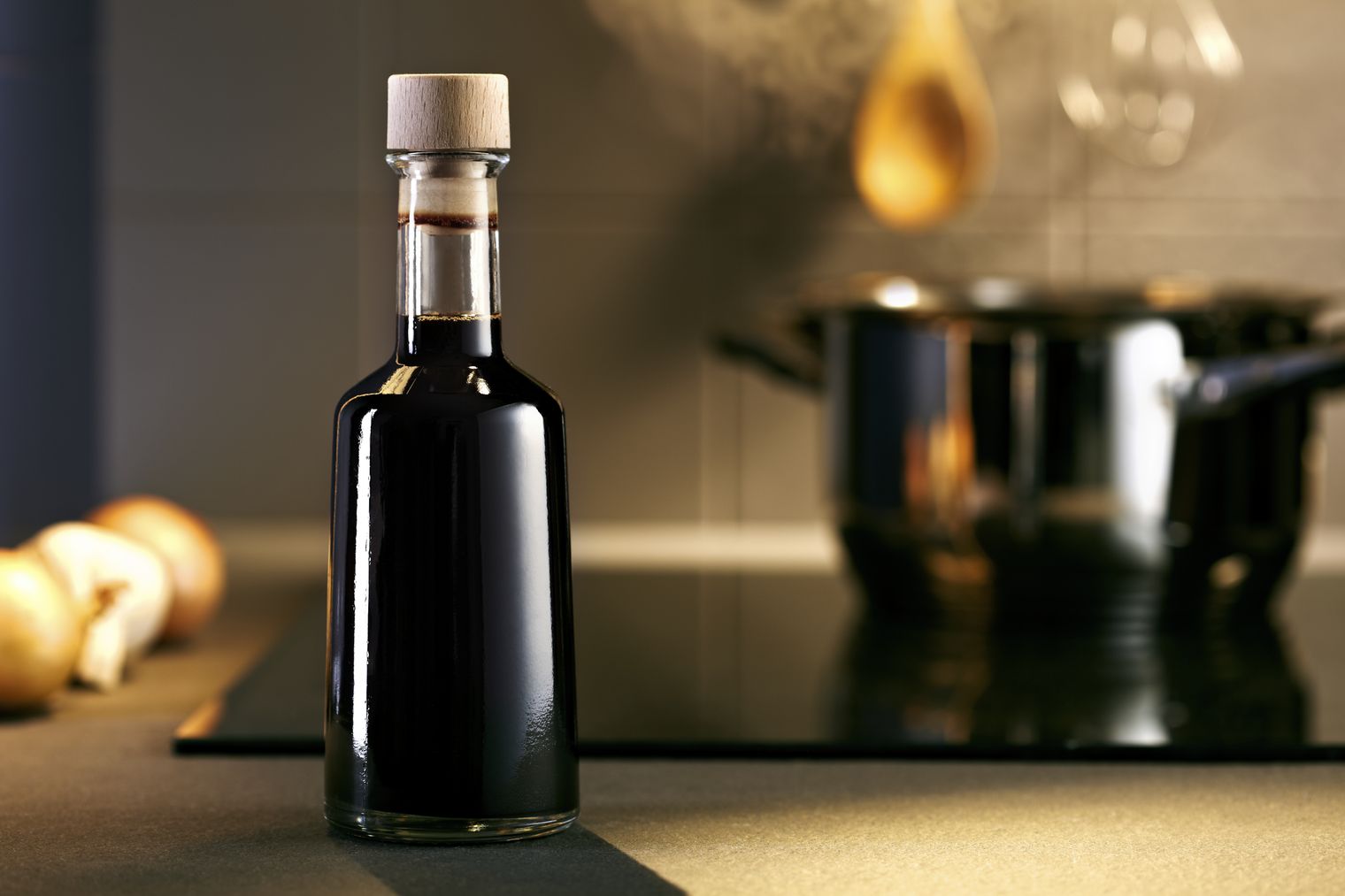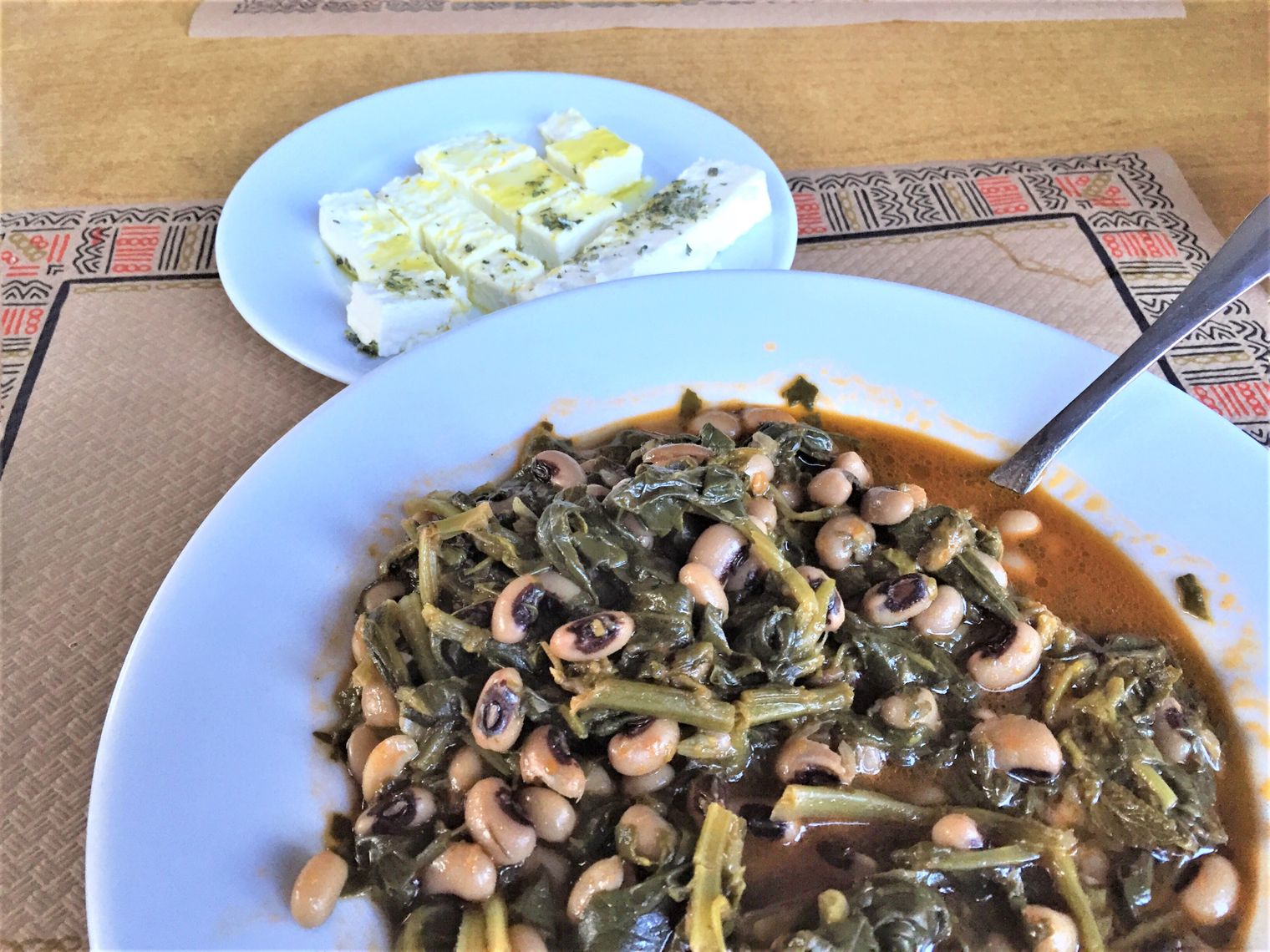Olive oil and balsamic vinegar are at the top of the list when it comes to culinary “power pairs.” And since you know we really love olive oil, we’d be remiss not to educate you on the versatile kitchen staple that is balsamic vinegar, which was born in Italy and has since gained huge popularity around the world.
But, just like olive oil, not all balsamic vinegar is created equal. It can vary quite a bit in terms of flavor and texture, depending on the variety you choose. Keep reading to learn more about the three main varieties of balsamic vinegar, how it’s different than other types of vinegar, and the tastiest ways to use it.
What is Balsamic Vinegar?
Balsamic is a deeply hued vinegar that generally has a subtle tangy acidity with a complex sweetness that complements both sweet and savory foods—fresh and dried fruits, cheeses, meats, fish, pizza, and roasted veggies, and more. Some people even put it in cocktails for a kick, or sip it straight as a digestif.
Depending on the specific variety, balsamic vinegar is made with either grape must (whole, pressed grapes, including the skin and stems) or grape must plus wine vinegar. While this tasty condiment is now used around the globe, balsamic vinegar first originated in Italy—specifically, the Modena and Reggio Emilia provinces, both of which lie in the Emilia-Romagna region of Italy. Here, climate conditions give grapes the ideal concentration of acidity and sugars.
Balsamic vinegar has most likely been produced in these regions for a loooong time—it just hasn’t always been called balsamic vinegar. According to Italy Magazine, the process of cooking grape must dates back to the ancient Romans, who used it as a seasoning and a medicine; and historians believe the first written account of balsamic vinegar dates back to 1046, when the emperor of the Holy Roman Empire was offered a “so very perfect vinegar” as he passed through the region.
However, even though the production of vinegar was prolific in the following centuries, it wasn’t until the 1700s that it was called “balsamic” vinegar. At the time, there were two varieties: fine balsamic and medium balsamic. And for the most part, these correspond to today’s main varieties: Traditional Balsamic Vinegar of Modena DOP and Balsamic Vinegar of Modena IGP, which we’ll dive into below!
4 Types of Balsamic Vinegar, Ranked By Quality
As mentioned above, there are several varieties of balsamic vinegar you may see at grocery stores or specialty food retailers. Ranked in order of quality and adherence to strict production standards, these are:
- Traditional Balsamic Vinegar of Modena PDO/DOP
- Condimento Balsamic Vinegar
- Balsamic Vinegar of Modena IGP
- Balsamic-Style Vinegars
Here, we’ll dive into what makes each variety of balsamic vinegar unique, so you can make a more informed decision the next time you buy.
1. Traditional Balsamic Vinegar of Modena PDO
Also referred to by its Italian name, Aceto Balsamico Tradizionale di Modena (or di Reggio Emilia) DOP, this is the most old school (i.e. traditional) variety of balsamic vinegar on the market. The “protected designation of origin” (DOP or PDO) designation means that it must adhere to strict, traditional production methods regulated by the European Union.
Traditional balsamic can be made from only two grape varieties grown in Modena or Reggio Emilia—lambrusco and trebbiano grapes. These grapes, along with their skin, seeds, and stems (together, referred to as “grape must”) are cooked in cauldrons over an open flame until the volume of liquid reduces down to about half, which concentrates its sugars. This also helps the vinegar achieve its classic deep brown color.
Next, the cooked grape must liquid is transferred to a series of wooden barrels (made of different woods such as ash, mulberry, oak, and juniper), where it can ferment, acidify, and concentrate even further. At minimum, traditional balsamic will age in a series of wooden barrels for 12 years to just the right aroma and taste.
Because traditional balsamic ages for so long in wood barrels, which allow moisture to escape, the end consistency is thicker (sometimes even syrupy) compared to other vinegars.
Traditional balsamic vinegar is often graded based on how long it has been aged:
- Affinato (fine): 12-year vintage
- Vecchio (old): 15-20 year vintage
- Extra Vecchio (extra old): 20-25 year vintage
The older the balsamic vinegar, the more expensive—after all, a lot of labor goes into a single bottle. But for many foodies, the higher price tag is well worth it.
2. Condimento Balsamic Vinegar
So, what happens when balsamic vinegar almost meets the specifications of “traditional,” not not quite? They’re labeled “condimento,” but rest assured, they’re still great.
These vinegars still include only cooked grape must that is aged for several years (typically 3-7 years) in wooden barrels, however, there are subtle differences that mean they don’t make the “traditional” cut.
According to Serious Eats, condimentos are often “excellent balsamic vinegars made outside of Modena and Reggio Emilia, or vinegars made by tradizionale producers that have only been aged for three or five or seven years.”
Meaning? They’re often a great way to get that traditional balsamic flavor, without such a steep price tag. A high quality condimento balsamic vinegar should either carry the IGP designation or a seal from the Consorzio di Balsamico Condimento.
3. Balsamic Vinegar of Modena IGP
Balsamic Vinegar of Modena (or Reggio Emilia) IGP can be a bit more variable in quality due to its less strict standards, but you can generally find high quality vinegars in this category. You may see it labeled by its Italian name: Aceto Balsamico di Modena IGP.
The “protected geographic indication” (IGP) label on this vinegar means that it must be made from grape varieties that commonly grow in the Modena or Reggio Emilia regions: lambrusco, montuni, sangiovese, trebbiano, albana, ancellotta, and fortana grapes. The grapes can be grown in other locations, but per European Union guidelines, they must be processed into vinegar in Modena or Reggio Emilia.
Unlike traditional balsamic (which only contains cooked grape must), balsamic vinegar of modena contains grape must and at least 10% wine vinegar, which gives it a higher acidity. The only additive it can contain is up to 2% caramel color. This type of balsamic is cooked in vats and aged for at least two months in wooden barrels—far less time than traditional balsamic. If “aged” appears on a bottle of IGP vinegar, that means it aged for at least three years.
Due to the shorter aging process, this category of balsamic is less complex and nuanced in flavor than traditional balsamic. It tends to taste a bit more like a typical vinegar, with some subtle sweetness. Of course, “aged” varieties of IGP balsamics will have more complexity.
4. Balsamic-Style Vinegars (Often Labeled “Balsamic Vinegar”)
A product that is simply labeled “balsamic vinegar” or “aceto balsamico” doesn’t have any of the designations mentioned above, and it’s not held to any specific industry standards either. So vinegars in this category are highly variable in terms of quality, ingredients, and flavor.
Sometimes they’re just straight-up balsamic vinegar imposters—made from a combination of wine vinegars (or even white vinegar or cider vinegar), with colorings, sweeteners, thickeners, and other additives that give it more of a balsamic taste and texture.
Other times, these are fairly legitimate balsamic-style vinegars that are simply made outside of Italy—for example, they could be made in Greece, Spain, or the United States. According to Serious Eats, you can tell it’s a “high-end balsamic imitator” if the ingredient list only features cooked grape must, or cooked grape must and wine vinegar. In this case, the vinegar could be pretty close to something in the IGP balsamic category.
How to Use Different Varieties of Balsamic Vinegar
There’s really no wrong way to use balsamic vinegar! But certain varieties lend themselves to specific culinary applications.
Higher end balsamics with a DOP/PDO or Condimento designation are sort of on par with fine wine or high quality extra virgin olive oil. In Italy, small quantities of these high quality balsamics are sometimes even sipped slowly as an aperitif or digestif. The only rule is that you generally don't want to cook with these, or you'll mask their delicious, complex flavor.
Try drizzling a high quality traditional or condimento balsamic on the following foods for a pop of flavor:
- Aged cheeses such as parmigiano-reggiano
- Fresh cheeses such as burrata
- Fresh and dried fruits
- Risotto and pasta dishes
- Roasted veggies
- Meats and fish
- Pizza
- Vanilla ice cream
- Panna cotta
IGP balsamic vinegars and balsamic-style vinegars, on the other hand, are often a bit thinner and more acidic, making them a great way to balance out the richness of fatty foods. They can be drizzled straight onto foods, depending on their taste and texture. And, compared to traditional and condimento balsamics, these work well when cooked into sauces. Here are some ways to use them:
- Balsamic vinaigrette salad dressing
- Pasta sauces
- Barbecue sauces
- Marinades
- Drizzled straight onto cheeses, pastas, pizza, and fruits
- Cocktails (balsamic adds a tangy kick to this Strawberry-Balsamic Smash from Bon Appetit)
Pro tip: You can always thicken up a thinner balsamic vinegar by simmering it in a saucepan on low heat for several minutes until it reaches your desired texture. Typically, two cups of balsamic vinegar will yield around ½ cup of balsamic glaze.
Bottom line
The world of balsamic vinegar becomes much easier to decode once you know basic label terminology (e.g. DOP/PDO, IGP, Condimento, etc). To an extent, you really do get what you pay for, but there are still plenty of delicious, good quality balsamic vinegars that will suit most of your needs without breaking the bank. Shop from our list above, or arm yourself with this information next time you hit up a grocery store or specialty food shop.
Product placement
PJ KABOS 'Family Reserve Organic - Medium'
High Phenolic and 2022 Gold-Award Winner.
Declared as 'One of the World's Best Olive Oils'.
Click here to shop.




